
Ecstacist of the pwoermd
Geof Huth, wreading and the single word poem

There’s a kind of tickling that language does, that letters do, somewhere in the brain. That reading does. Looking and the mind have a special relationship. As with faces.
In Geof Huth’s visual pwoermd, ffjordffloess, the letters and the ligatures that love them are Loki-like tricksters tickling. Trickatures. It’s a lavamelt, a slow glacial movement of f’s to merge together, to flow.
The f’s are doubled, duplicitous.
We have to ffjord the river of our usual alphabetic reading. The f-floes together. They melt, they mar, they merge with each other and with what’s next: a j or an l. It’s a music of ascender and descender. Fjords are made from that: mountainsides and waterffilled valleys. Mountain peak reflected in water.
And then at the end, there’s what seems like a half f, sliced vertically, maybe cut from a whole f, f-ed off, an anti-ligature, sliced. One arm gone. Only half a foot. And the arm that’s there, stumpy wing that it is, is different than the other f’s.
But of course, this letter is ineffable. It’s a long s. It belongss with the final s. This poem is about doubles, one thing joining another. Doppelganger effs and esses. Decorations: ligatures and extra letters. Extra f’s and s’s.
And rhymes internal to a single word. Fjord and floe. The up of an f or d to the down of a j. The o of fjord to the o of floe. The ligature bridging f’s and a j rhymes with that backward reaching ligature of the e.
It’s about a word that is an English word except that it isn’t. It’s a word to read but also to look at.
I recently spoke with Geof Huth about his pwoermk.
GB: Geof (Maybe in this one particular instance, speaking of this pwoermd, I should write ‘Geoff”): Let’s start with basics. Can you explain what a pwoermd is and why it engages you? I think here about your notions of Qage and wrawing, about minimalism, and about your practice of fitting creativity into the crevices of workdays. Of looking and reading closely and your awareness of the tactility of language and how reading reifies.
GH: Actually, my name used to be “Geoff.” I changed it to simplify it, to remove the unnecessary f, to reduce it to four characters so it would match my surname in size, to replace the word off with the more meaningful word of, to square my name:
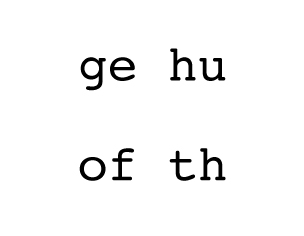
The ff—and this is important—is a rare, but sometimes still present, way of showing a capital letter. Centuries ago, other letters were also doubled at the start of a word to designate a capital, but now only the ff survives, and just barely, in our cultural memory, often appearing in nothing but the surname ffolkes—held onto, I've always assumed, because families enjoyed the otherness of that spelling, the doubling, the uncapitalized capital, the way the two fs hold each other up (especially in a ligature), the way the sight of this simple name seems somehow more important than those other names that are capitalized with nothing but a letter too tall for its companions.
And so that ff hints another way to look at this pwoermd, another layer of cultural fact, another requirement of the reader—for the pwoermd is made for the hyperliterate, for those so deep within the word that they have forgotten the sense of words except abstractly, for those sensitive to the meaning of a serif (and it is there), for those sensitive to not only the sound but also the sight of the word. For those who can smell the size and weight of a word with their eyes closed.
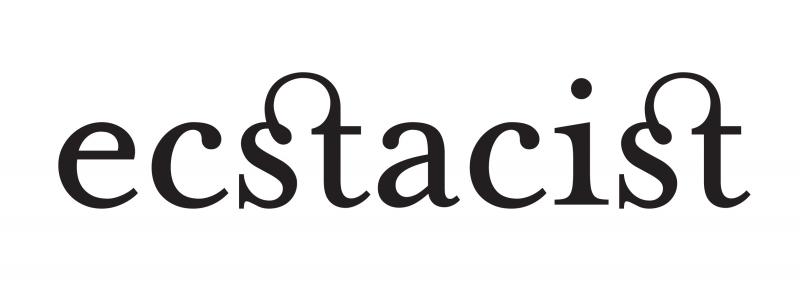
I am drawn to the pwoermd as a concept, as a way to make meaning, as a way of art, because I am drawn to both words and smallness. A theory I expound is that only the tiniest part of a work of art matters, only some fragment so small that one might miss it. A pwoermd, being nothing but a single word presented as a poem, is all smallness. Within the space of a few letters, something must occur, something must set a spark. And that’s all a pwoermd is: A spark to make the imagination move. My first collection of pwoermds was titled wreadings, because a pwoermd is something that a reader needs to finish writing. The possible connections to make within a single word can be great when the mind rests upon it lightly and with an opening mind.
I’m drawn to pwoermds also because each usually comes to me in an instant. They arrive as pure and finished inspirations, absolutely complete. So I don’t need to take credit for them. My mind or my wandering fingers create them almost without the intervention of my self.
GB: How do you see this pwoermd relating to the ‘meaning’ of the two words which form it? In what way is it mimetic, a visual onomatopoeia?
I have the sense of language working in several parallel ways in this pwoermd. There’s the meaning of the words. Fjord and floe. Images of the north or far south: mountain, glaciers, icesheets, floes and fjords.
There’s the sound. The f’s, the o’s. The blending of the f’s into the ‘y’/j sound and into the l. And then there’s the writing system. It’s so rich in history. A particular font. A particular choice of allograph: the long s and the ligatures. The piece is a rejoinder to these journeymen joiners, the ligatures. They are a recurring interest of yours.
GH: Gary, you have seen and said much that there is to say about this pwoermd above, so I shouldn’t have much more to add, and I always wonder if I should answer this question anyway — I talk too much about my own poetry, rather than leaving it to be itself and allowing people to finish make it themselves.
Yet I’ll still add a few thoughts here .
You missed a word within this word, the intentional aporia, the word that contradicts much of the rest of the poem, the word the draws into question the poem’s fairly clear meaning: the word is loess. Not just ice, not just water, not just north, not just winter, but also a gathering silt upon the earth, yellowish instead of blue-white and blue-black, something that rests still but can move almost as water, something liquid in its solidity. Because every poem is a contradiction of itself, because every word can mean its opposite (just say it with sarchasm), because we must be forced to find connections within a poem, no matter its size.
Especially in this poem, which is about connections between opposites, about doubling, about the fact that mirroring doesn’t produce a perfect replica of the thing reflected but its perfect opposite.
GB: If you had to redesign our writing system, what would you do? What would you change? What would you keep? What else would you make it do?
GH: I’ve actually thought about this for many years. Thirty years ago, my interest was in simplifying English spelling to such a degree that I was writing poems in a spelling system I called New American Spelling. This spelling system reduced whatever sets of unnecessary letters I could from the language, sometimes in fairly standard ways (thru, tho, even thot) — and these spellings still dot my writing — and sometimes in less common ways (destroyd, brokn, walkt). My idea was to coordinate spelling with sound as much as I could without adding confusion. Given that we Anglophones (just ahead of the Francophones) have the worst spelled language in the history of the world and historically the least spelling reform, I thought it productive to produce a spelling system that I could use in my lineated poetry and that would then take hold slowly so that English would become easier for children and non-native speakers to spell and pronounce.
At best this idea was quixotic — and at its worst, megalomaniacal. I abandoned the idea after a year or so, but some drafts of my poems from the early 1980s retain these spellings, relics of a bad idea. For instance, eventually that spelling reform would have had to’ve removed the letters, c, q, and x as being totally useless—yet there is some great beauty in those letters, especially the many allographic forms of the letter Q, the letter that type designers take the most liberties with and make the most of. And I don’t like destroying the possibilities for beauty.
Now, I still believe that English is a poorly spelled language, but it is this poor spelling that makes English visually rich, that makes it the best language to use to write pwoermds. Pwoermds can be written in many ways: We can take an existing word and call it a pwoermd, as I have recently done in the case of percuss. We can gene-splice words to create a pormanteau that makes a kind of new sense, as I did above with the self-contradicting and internally consistent sarchasm, or as with my visual pwoermd infinéant. We can invent words that appear to be made out of the thin air of meaningless speech, like my mergasinth. We can focus the pwoermd on the shape of letters and the expected confluence of their sounds, as in my nanopoem tf. We can add to or subtract from a single word to make it something different, something that refers to various indistinct ideas, as in spolt. But much of the richness I see in pwoermds is where complicated play is made in the language, often by combining a number of these techniques in one pwoermd.
And that is what English can do so well because it is so poorly spelled. The fact that we can spell so many sounds in so many different ways (for, fore, four; palate, pallet, palette), changing the meaning dramatically as we do, and that we can also use one sequence of letters to represent so many different sounds (in my investigations, I’ve determined that the -ough- sequence in English is pronounced in 17 different ways), means that English has a richer orthographic DNA from which to create new wordlings. To consider the value of a skewed orthography, let’s take the examples of French and Spanish. I know these languages well enough to write pwoermds, or even multi-word poems, in them, but my better pwoermds are in French, because that language gives me more to play with.
And writing and pwoermding are play above all. And play is the most serious of human endeavors, the way we best learn and create.
To answer your long-forgotten question, the way that I would change our writing system, assuming we mean the Latin alphabet, is by recovering its richness, which is what I’m always working on. I write poems with the German Eszett or with the dotless Turkish i (which denotes a short i). One entire pwoermd of mine is simply a double-dotted (or a diæresised or umlauted or trema’d) I:
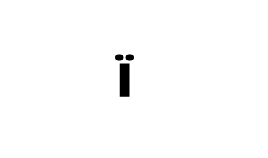
This seems to me a full functioning pwoermd though it remains one of my shortest poems — but not my shortest, which is nothing but a dot or a period or a tittle or a full stop floating in the middle of a blank page.
I try to take advantage of the stigmeological richness of the language by using abandoned forms of punctuation or ones not used in English. I sometimes use ancient printed and scribal forms of letters. I play with handwriting and the idea of visual puns within letterforms. I use the workings of other writing systems within my own. Take a look at the breadth of Unicode character-encoding to understand the possibilities that we can use, and this is only from a printed-character point of view.
We have richness enough. We just have to know enough to use it.
Or I might extend punctuation a bit. Punctuation is rich in meaning, but we could add more to increase the possibility of meaning within text. When we speak, we use pauses or intonations to make our meaning clear, yet punctuation and intalicization ony help us a little. There is much more our writing system could do with punctuation to display meaning.
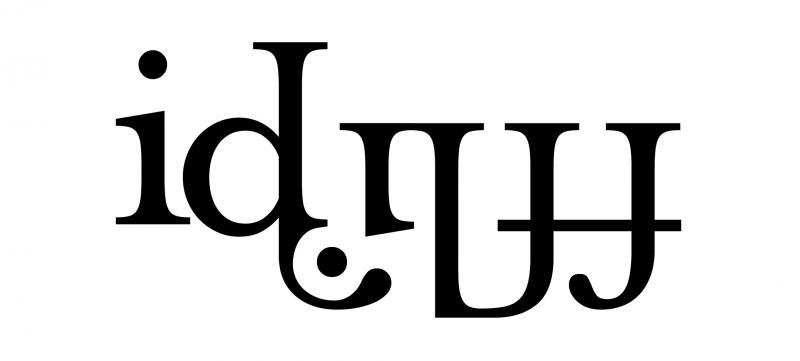
GB: You said before that pwoermds are made for the hyperliterate, but what exactly do you mean by that? And do you think this means that you write pwoermds to be inaccessible to most people?
GH: I once wrote to a pwoermdist — which has become the word that refers to a maker of pwoermds — that he had created the humorous pwoermd, and in response he asked me, “Aren’t they always?” which made me pause to think. Many pwoermds are puns, and they may read at first as jokes and nothing else. (Certainly, plenty of portmanteaux that riddle advertisements and conversation are nothing more than jokes.) But I don’t see humor as the end of even a humorous pwoermd. There has to be something else there, something related to the humor, sure, but also something about how the language works, or fails to work properly.
So my pwoermds are often easy enough to grasp, so they are for anyone willing to consider a word a poem (say, like Ralph Waldo Emerson), or anyone prepared to be entertained by a word. But I write pwoermds upon my deep history with language in all its forms (visual, aural, semiotic), and I write with a knowledge of the history of English orthography and handwriting styles, with some knowledge of calligraphy, with the eye of a printer. This knowledge is necessary for me to write the pwoermds I write, and this means that sometimes a pwoermd of mine has levels many people don’t see: historical references, puns in other languages, self-contradictions that keep the beast afloat in the rough seas of everyday language.
I mean for everyone to read my pwoermds, so I post all of them somewhere on the Internet as they are born. Some people may see only one level of them, but others will see more, and I write specifically for those others, those who see more in the way that I do. But that’s what a poet does: writes as a poet expecting other poets to best understand, just as a musician knows that another musician will best understand the meaning of the music.

GB: I called your poem ffjordffloess a visual pwoermd, which assumes that some pwoermds are not visual. What do you see as the difference between the two?
GH: After years of thinking about this, I’ve decided that most pwoermds are visual because they usually need to be seen to be understood. They are plays with sound, sense, and sight, but it is the letters themselves as visual markers that make the meaning clear. Without them, a pwoermd may be literally invisible. (Say “sarchasm” to someone and ask them what it means.)
I still make a distinction between the unadorned pwoermd and the visual one, though. The unadorned pwoermd is a sequence of letters that does not lose its meaning if written in a different typeface or presented handwritten versus printed. A visual pwoermd is one designed to be seen and to give meaning in a specific visual form.
The pwoermd ffjordffloess, for instance, loses much of its meaning when presented as a simple sequence of letters (as it is in this sentence). This pwoermd is part of an unfinished sequence of visual pwoermds entitled wordlings that plays with ligatures, specifically those in the ligature-rich typeface Mrs Eaves cut by the great Zuzana Licko, one of the proprietors of the Emigre type foundry. These poems are lost without that typeface. That is what makes them work. That typeface is also the inspiration for the poems. As I worked on these poems, I was often pushed into an idea not by myself but by a particular ligature and the beautiful way it was fashioned. This rich typeface has numerous three-letter, double-letter, and capital-letter ligatures almost never seen in a typeface, and so Mrs Eaves is, to some degree, the visual language of these poems.
Other visual pwoermds may inhabit a certain image or be fashioned typographically or calligraphically in ways that are essential to its meaning. And this hazy line between the visual and the textual (which are usually inseparable) is the line between the visual and the unadorned pwoermd, and between the visual and the lineated poem.
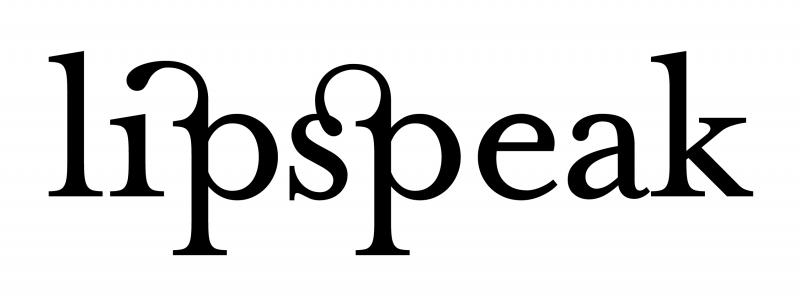
GB: What can you say about reading and noticing language in its natural environment and acting ‘in the wild’ as opposed to like a trained seal?
GH: Usually language, even in the wild, is a domestic animal. Someone has written it, has made it, has put it up somewhere, and as we walk through the textscape of the modern world we see its forms floating before us—or allow them to become the invisible background of our lives. But I’m often sensitive to words that have gone wild, and I see wildness in two forms.
One of these forms is where someone writes and displays words but does so without a full sense of writing. It’s outsider signage: roughly spray-painted words, a piece of cardboard with misspellings scrawled upon it, a rough-hewn shopping list half-crumpled on the ground, even a child’s first attempt at writing. Given the right measure of purpose and failure, these can become interesting found poems, and I will snap a picture of them as examples of my poetry—I being the poet simply because I was the one who decided to call each a poem.
The other form of wildness is the most interesting to me, and I usually collect these as part of my sequence of “Found and Aleatoric Poems.” These are words made by a person’s hand but then transformed by the random acts of the earth or the people within it. Sometimes, such a poem is a weird sequence of words or a single word that has been shredded into a gestalt that was never before there. Or the ravages of living outside through a winter have eaten the work away. Or the text is what remains of a letter to my grandmother in the form of a tiny rectangle of text the size of the stamp she cut from an airmail letter/envelope.
But forms meld. Sometimes, a single letter I see is enough to be a poem. Sometimes, the text has worn away into a vague watery pattern. Sometimes, I take a photograph to distort the image of the text back into the sense of text as textile, back into the physical interlocking fibers that weave each sheet of paper together.
Everything is of a piece because all the pieces fit together.
Geof Huth lives in Schenecstacy, New York and creates visual poetry, textual and aural work as well as critical writing. His extensive main blog on visual poetics is dbqp. Huth’s latest books are Aution Caution (Redfoxpress, 2011), NTST (if p then q, 2010), and Texistence: 300 Pwoermds (with mIEKAL aND, Xerox Sutra Editions, 2008.)